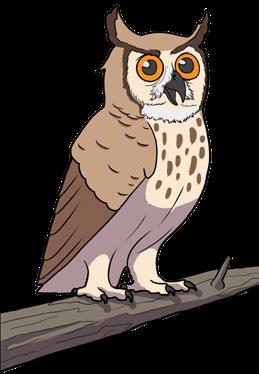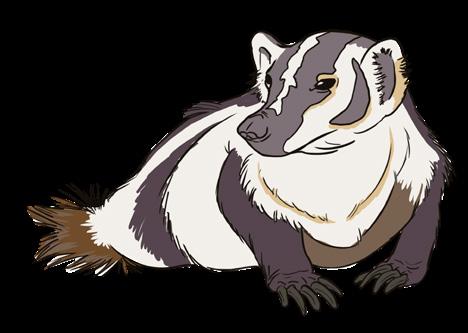UTAH DARK SKY PASSPORT

an invitation to explore the night


Go to a Dark Sky Place (see map on next page)
Explore the great outdoors at night and connect with the cosmos
Learn more by completing the dark sky activities
For each Dark Sky Place you visit:
Describe your experience (see pages at back of Passport)
Stamp your Passport with the Dark Sky Passport Stamps
Share your story on the Dark Sky Passport website & receive a Dark Sky Certificate!

Bortle Scale
Photo Credit: skyglowproject.com
how does the dark sky passport work?
8/9 City/ Inner City Sky 7 City/ Suburbia Transition 6 Bright Suburban Sky 5 Suburban Sky


4 Suburban/ Rural Transition 3 Rural Sky 2 Dark-Sky Site 1 Excellent Dark-Sky Site
how dark is your night sky? Use the Bortle Scale below to check the darkness of your night sky!

dark sky places of Utah Learn more about the International Dark Sky Places Program at darksky.org
Which Dark Sky Places in Utah have YOU been to?
NATIONAL PARKS
Arches NP
Bryce Canyon NP
Canyonlands NP
Capitol Reef NP
Zion NP
NATIONAL MONUMENTS
Cedar Breaks NM
Dinosaur NM
Hovenweep NM
Natural Bridges NM
Rainbow Bridge NM
Timpanogos Cave NM
LOCAL PARKS
North Fork Park
STATE PARKS
Antelope Island
Dead Horse Point
East Canyon
Fremont Indian
Goblin Valley
Goosenecks
Jordanelle
Kodachrome Basin
Rockport
Steinaker COMMUNITIES
Castledale Valley, UT
Helper, UT
Moab, UT
Springdale, UT
Torrey, UT
Know before you go
What to Bring:
• warm clothes
• headlamp or flashlight with a red light
• Dark Sky Passport
• pencil
• water & snacks
• star chart
• backpack
• blanket
• binoculars
• camera



Why do stargazers use red lights?
It takes 20 minutes for the human eye to adapt to the dark. During that time, our pupils dilate and our eyes produce a protein “rhodopsin” that helps us absorb light in dark settings. Red is the only color of light that will not interrupt our night vision.
Phases of the Moon
The moon orbits the Earth every 28 days. We can only see the part of the moon that is lit up by the sun. When the moon sits between the Earth and sun, the moon appears as a shadow, or “new moon.” As the amount of sunlight grows between the new and full moon, this is called “waxing.” When there is less sunlight hitting the moon, this is called “waning.”
Can you fill in all the phases of the moon?



• Waxing crescent
• First quarter • Waxing gibbous
• Full moon • Waning gibbous • New moon
• Last quarter • Waning crescent
Constellation Connections
Constellations are groups of stars. Some stars may be closer than others and some may be brighter. The constellations you see depend on where you are on Earth and where the Earth is along its path as it orbits the sun. Constellations change by the season, except those that occur around the poles. Only the stars on the dark side of the Earth can be seen. Many of the stars we see in the summer can’t be seen in the winter because they are on the same side of the sky as the sun.

Which observer on Earth, A or B, is not able to see the starlight because of the brightness of the sun?




a b


Can you identify and connect the dots to complete the constellation?




Passport Stamps Stickers





Stickers











Night animal scavenger hunt
American Barn Owl
Badger
Big Brown Bat
Boreal Chorus Frog
Cricket
Common Nighthawk
Coyote
Deer
Great-horned Owl
Firefly
Kangaroo Rat
Raccoon
Ringtail
Scorpion
Sphinx Moth
Tiger Salamander







Cosmic Crossword


Did you know “cosmos” is another word for the universe?
milky way shooting star constellation earth orbit planet galaxy telescope nocturnal crescent big dipper observatory
N E T V L Y A O G A L A X Y V B Q B E N F L S V Y K L H R X C I E G L W C K U R R A M O Z T O G A S E A R T H Z H L T Q R H N D O A S V K J R G Y A O M G K S I R B C H E L W H V B L I R L T P B X O W O J P R F A C L K S E P I R P L A N E T Y X M K P F L E T F E H F S P X M W Z Y G V L R B L N V B V N O G V E W U B A K T S H O O T I N G S T A R C T M D B A F M K L U Z L M Y Q L I E J R N O C T U R N A L F T M O W G D T Y E B O X C R E S C E N T
dark sky Place

Dark Sky Place: ______________________
Date: _______________________________
Moon Phase: ________________________
Bortle Scale: ________________________
What constellations did you see?
What night animals did you see or hear?
What did you enjoy most about this experience? _________________________

___________________________________ ___________________________________ ___________________________________
___________________________________ ___________________________________ ___________________________________
____________________________________ ____________________________________ ____________________________________
dark sky Place


Dark Sky Place: ______________________
Date: _______________________________
Moon Phase: ________________________
Bortle Scale: ________________________
What constellations did you see?
What night animals did you see or hear?
What did you enjoy most about this experience? _________________________
___________________________________ ___________________________________ ___________________________________
___________________________________ ___________________________________ ___________________________________
____________________________________ ____________________________________ _ __________________________________
dark sky Place

Dark Sky Place: ______________________
Date: _______________________________
Moon Phase: ________________________
Bortle Scale: ________________________
What constellations did you see?
What night animals did you see or hear?
What did you enjoy most about this experience? _________________________

___________________________________ ___________________________________ ___________________________________
___________________________________ ___________________________________ ___________________________________
____________________________________ ____________________________________ __ _________________________________



For more fun activities and information, scan the code for the dark sky passport website! Email: DarkSkyPassport@usu.edu















































